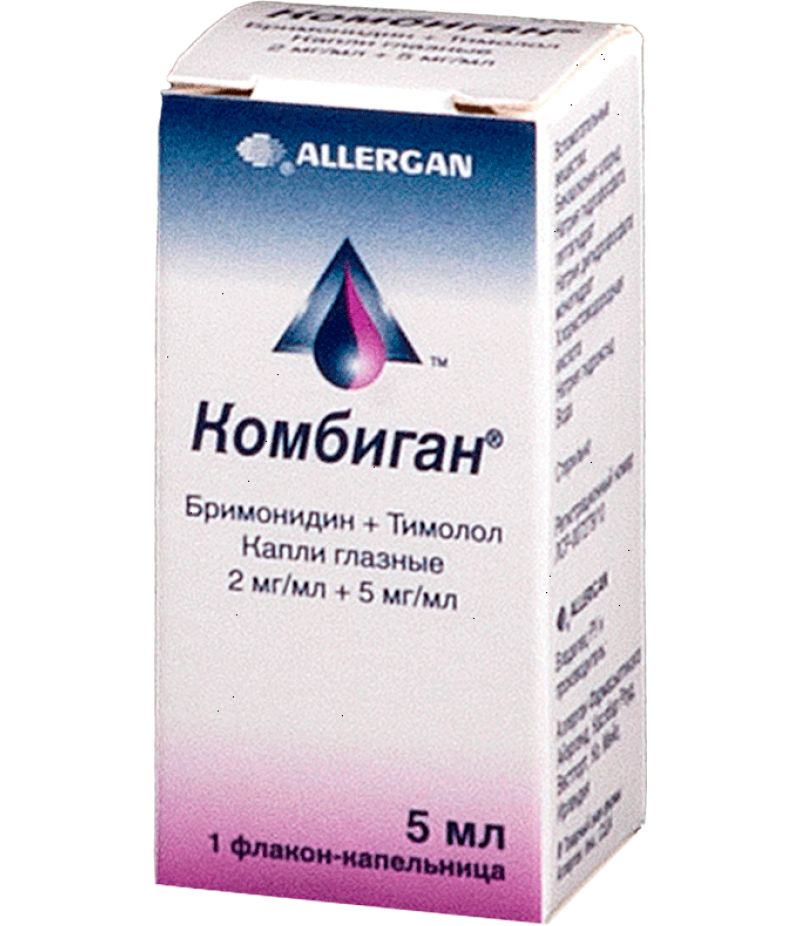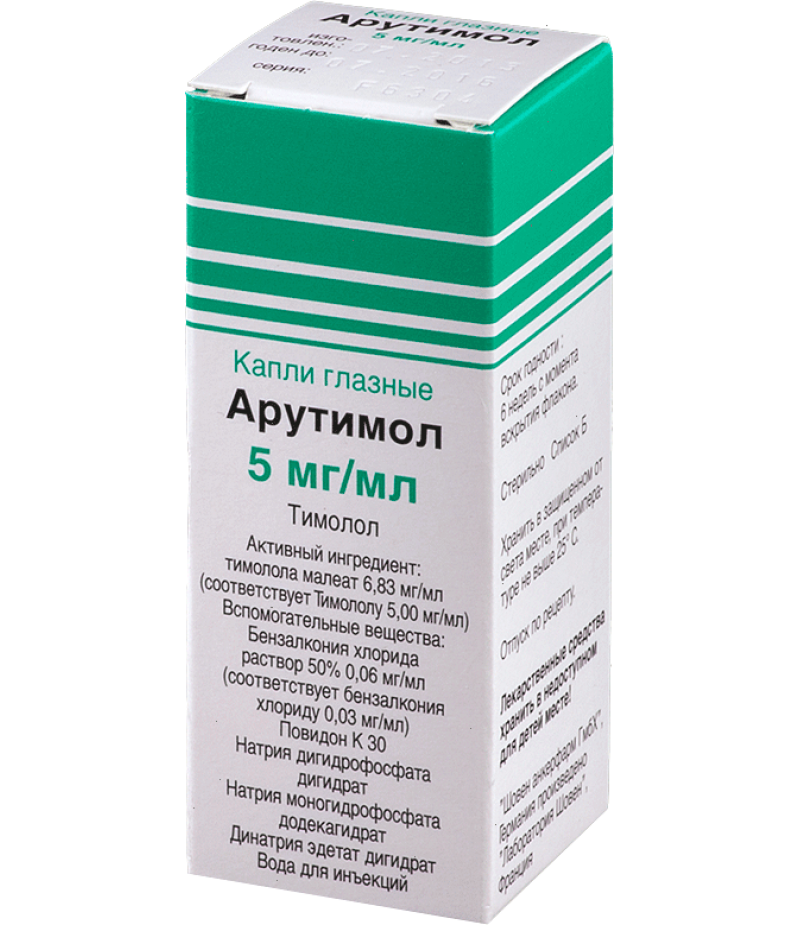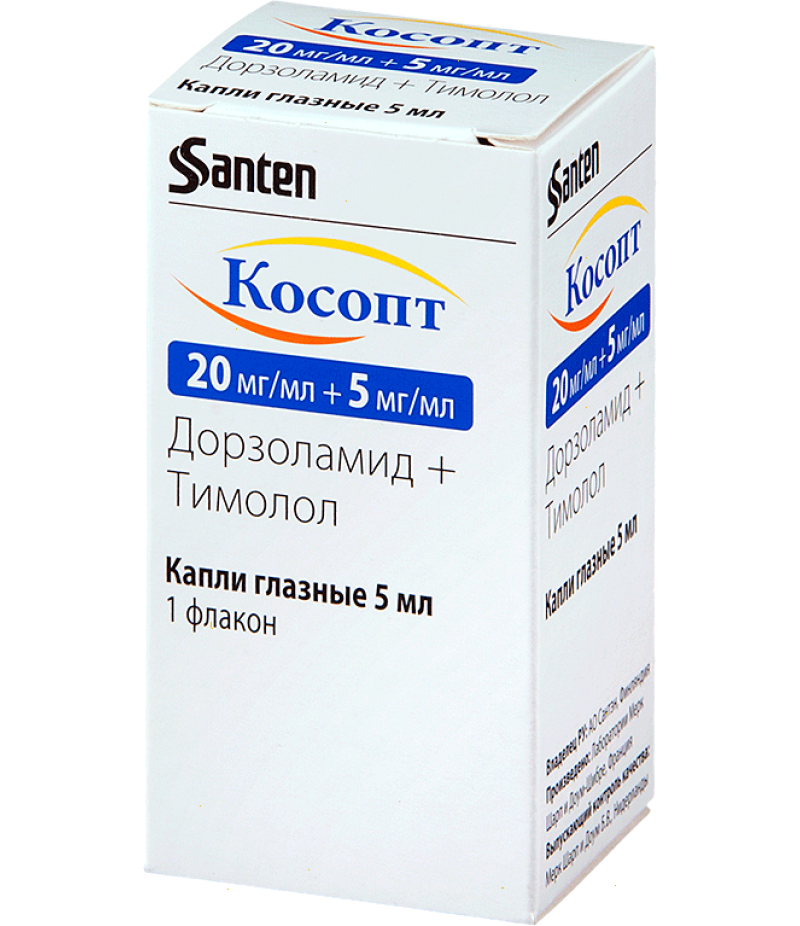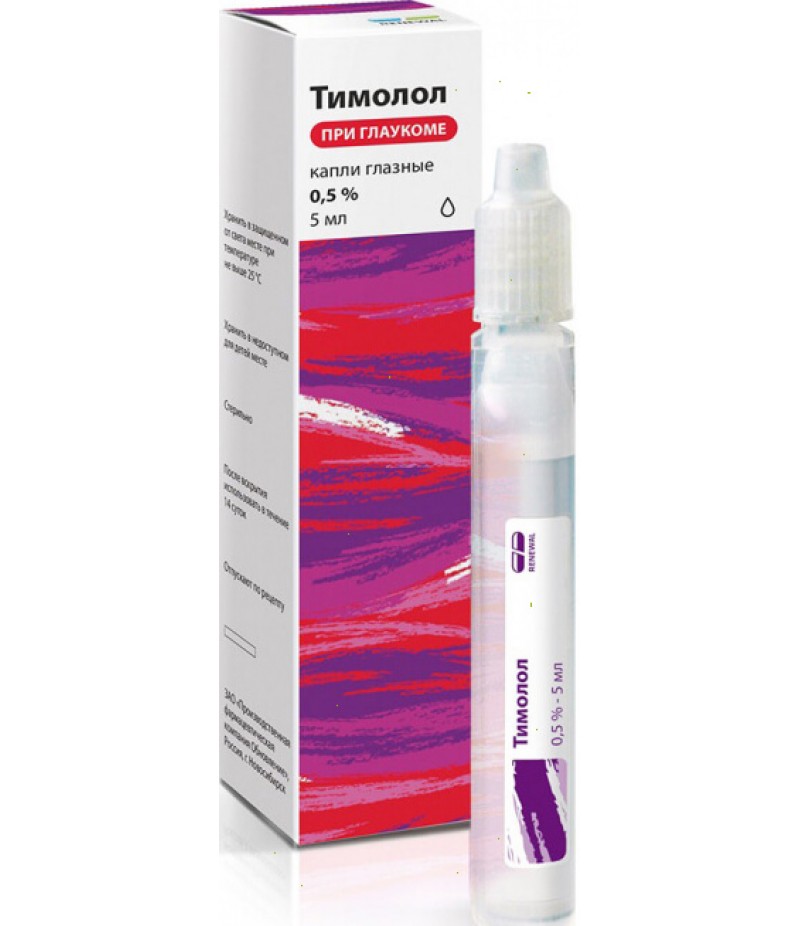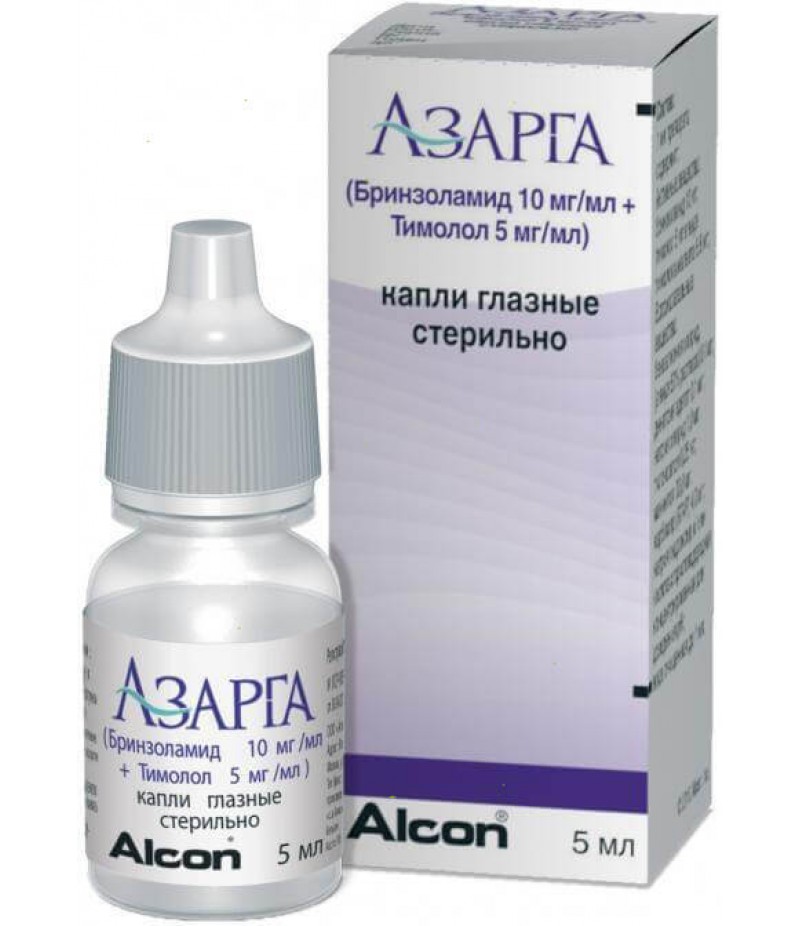Combigan drops 2mg + 5mg 5ml
- $43.50
- 2 or more $42.75
- 3 or more $41.90
- Availability:In Stock
Combigan eye drops instruction for useReed more and buy Combigan on this pageComposition Drops of the eye in the form of a transparent, greenish-yellow solution.In 1 ml of Combigan is containedBrimonidine tartrat..
Tags: drops
Combigan eye drops instruction for use
Reed more and buy Combigan on this page
Composition
Drops of the eye in the form of a transparent, greenish-yellow solution.
In 1 ml of Combigan is contained
Brimonidine tartrate 2 mg
timolol (in the form of maleate) 5 mg
Excipients: benzalkonium chloride, sodium hydrogen phosphate heptahydrate, sodium dihydrogen phosphate monohydrate, hydrochloric acid, sodium hydroxide, water.
Packaging
5 ml - a vial of a dropper plastic (1) - packs cardboard.
5 ml - a vial of a dropper plastic (3) - packs cardboard.
pharmachologic effect of Combigan
Combigan is a combined drug that includes 2 active substances: brimonidine - adrenomimetic, which stimulates alpha2-adrenoreceptors, and timolol - a blocker of beta adrenoreceptors. Both active substances reduce intraocular pressure (IOP) due to the combined interaction, leading to a much more pronounced hypotensive effect compared to the effect of each of the components alone.
Brimonidine is an alpha-adrenergic receptor agonist, and it has a 1000-fold greater selectivity for alpha2-adrenergic receptors compared to alpha1-adrenergic receptors. Selectivity is expressed in the absence of mydriasis and vasoconstriction of the vessels of the microcirculatory bed. The hypotensive effect of brimonidine is provided by reducing the formation of intraocular fluid and increasing its outflow along the uveoscleral pathway.
Timolol is a non-selective beta-blocker, it does not possess internal sympathomimetic and membrane-stabilizing activity. Timolol reduces IOP by reducing the formation of intraocular fluid. The exact mechanism of action is not established, it may be associated with inhibition of the synthesis of cyclic adenosine monophosphate (cAMP) and is caused by endogenous stimulation of beta-adrenergic receptors.
Pharmacokinetics
The mean values of the maximum concentration of the drug in the blood plasma (Cmax) of brimonidine and timolol after the application of the Kombigan® prepatare were 0.0327 and 0.406 ng / ml, respectively.
Brimonidine
When installing 0.2% solution in the form of eye drops, the concentration of brimonidine in the blood plasma is very low. Brimonidine is slightly exposed to metabolism in the eye tissues, the association with plasma proteins is about 29%. The half-life (T1 / 2) of the drug after topical application on average is about 3 hours.
The main part of the drug (about 74% of the dose absorbed into the systemic bloodstream) is excreted by the kidneys in the form of metabolites for 5 days, unchanged drug in the urine is not detected. In vitro studies on liver cells of animals and humans, it has been shown that aldehyde oxidase and cytochrome P450 are largely involved in the metabolism process. Consequently, systemic induction is determined, first of all, by the metabolism of the drug in the liver.
Timolol
80% of timolol, used in the form of eye drops, enters the systemic bloodstream by absorption through the vessels of the conjunctiva, the nasal mucosa and the lacrimal tract. After the installation of eye drops, the maximum concentration of timolol in the aqueous humor of the eye is achieved after 1-2 hours. The half-life (T1 / 2) of timolol in the blood plasma is about 7 hours. Timolol slightly binds to blood plasma proteins. Timolol is partially metabolized in the liver; the active substance and its metabolites are excreted by the kidneys.
Combigan, indications for use
open-angle glaucoma;
ophthalmogypertension (with insufficient effectiveness of local therapy with beta-blockers).
Contraindications for Combigan
Hypersensitivity to the components of the drug.
Increased respiratory tract reactivity, including:
Bronchial asthma.
Bronchoobstruction, incl. in the anamnesis, severe chronic obstructive pulmonary disease.
Sinus bradycardia.
Atrioventricular blockade of II-III degree without implanted artificial pacemaker.
Heart failure.
Cardiogenic shock.
Concomitant therapy with monoamine oxidase (MAO) inhibitors, antidepressants - tricyclic and tetracyclic (including mianserin).
Age to 18 years.
The period of breastfeeding.
Carefully:
Renal / hepatic insufficiency (the use of the drug is not sufficiently studied in this group of patients).
Depression
Cerebral or coronary insufficiency.
Reynaud's syndrome.
Orthostatic hypotension
Obliterating thromboangiitis.
Severe cardiovascular diseases of unstable course.
Diabetes.
Episodes of hypoglycemia (in the absence of therapy).
Pheochromocytoma (without previous treatment).
Metabolic acidosis.
Simultaneous use of radiocontrast preparations.
Intravenous injection of lidocaine, blockers of "slow" calcium channels (verapamil, diltiazem) in connection with the risk of suppression of atrioventricular conduction, the development of bradycardia, heart failure and lowering blood pressure.
Simultaneous prescribing or changing the dose of drugs taken from groups of adrenomimetics (isoprenaline) and adrenoblockers (prazosin), as well as other agents that affect adrenergic transmission - because of their possible interaction with the active components of the drug or changes in their therapeutic potential.
Dosing and Administration
In adults, including elderly patients:
Locally, instilled in the conjunctival sac of the affected eye 1 drop 2 times / day at intervals of 12 hours.
Combigan can be used with other ophthalmic drugs to reduce intraocular pressure. If you use more than 2 drugs, then you need to do a 5-minute break between instillation.
As with the use of other eye drops, to reduce the possible systemic absorption, it is recommended that the tear sack is pressed briefly (for 1 minute) in the area of the projection of the lacrimal sac at the inner corner of the eye.
Application in pregnancy and lactation
Controlled studies to study the use of the drug Combigan in pregnant women were not conducted.
Brimonidine
There is no data on the use of brimonidine in pregnant women. In animal studies, reproductive toxicity has been demonstrated at high doses of the drug, which have toxic effects for the mother. The level of risk for a person is not established.
Timolol
In animal studies, reproductive toxicity is established when doses of the drug are used that are significantly higher than those recommended for use in clinical practice. Epidemiological studies have not revealed congenital malformations of the fetus, but there is a known risk of intrauterine fetal development delay with oral intake of beta-blocker drugs. In addition, symptoms characteristic of the group of beta-blockers (bradycardia, lowering of arterial pressure, respiratory dyspnea and hypoglycemia) were observed in newborns when the beta-adrenoblockers were used by the mother up to delivery.
In this regard, in the event that Combigan is appointed during pregnancy right up until the time of delivery, medical supervision of the condition of the newborn during the first days of life is necessary.
Combigan can be used during pregnancy only in case of special need.
During lactation
In preclinical studies, it has been established that brimonidine and timolol are excreted in breast milk. Breastfeeding for the period of treatment should be discontinued.
Side effects
The most frequent side effects were conjunctival hyperemia of the eye (about 15% of patients) and burning sensation of the eye mucosa (approximately 11% of patients). In most cases, the severity of these symptoms was weak, the withdrawal of therapy was required only in 3.4% and 0.5% of cases, respectively.
During the clinical trials of Combigan, the following side effects were reported, taking into account the frequency of occurrence: very often (> 1/10); often (> 1 / 100,1 / 1000,
From the side of the organ of vision:
very often: congestion of the eye, burning sensation.
often: acute burning or stitching pain, allergic conjunctivitis, corneal erosion, superficial keratitis, skin itchy eyelid, conjunctival follicle disease, blurred vision, blepharitis, epiphary, dry eye mucosa, discharge from the eye, pain, irritation of the mucous membrane of the eye, foreign body sensation .
Infrequent visual acuity, conjunctival edema, follicular conjunctivitis, allergic blepharitis, conjunctivitis, floating precipitates in the vitreous, astenopia, photophobia, hypertrophy of the eye papillary muscles, eyelid tenderness, conjunctival pallor, corneal edema, corneal infiltrates, vitreous fracture. Mental disorders: often - depression.
From the nervous system:
often - drowsiness, headache;
infrequently, the gambling, syncope.
From the cardiovascular system:
often - increased blood pressure;
infrequent: congestive heart failure, palpitation.
From the respiratory system:
infrequently: rhinitis, dryness of the nasal mucosa.
From the digestive system:
often - dryness of the oral mucosa;
infrequently - a perversion of taste.
From the skin and subcutaneous fat:
often - swelling of the eyelids, itchy skin of the eyelids, reddening of the skin of the eyelids;
infrequently - allergic contact dermatitis.
Other violations:
often - asthenic conditions.
Laboratory indicators: often - increased activity of liver enzymes.
The following side effects have been reported since the appearance of the drug Combigan in the market:
From the cardiovascular system:
The frequency is unknown - arrhythmia, bradycardia, tachycardia, lowering blood pressure.
Side effects that were observed with the use of one of the active substances, the possibility of occurrence of which is not excluded when using the drug Combigan:
Brimonidine
From the side of the organ of vision: iridocyclitis, miosis.
Mental disorders: insomnia.
On the part of the respiratory system: inflammatory diseases of the upper respiratory tract, shortness of breath.
From the digestive system: perversion of taste, indigestion. Other: systemic allergic reactions.
Timolol
From the side of the organ of vision: decreased corneal sensitivity, diplopia, ptosis, vascular rupture (after filtration surgical treatment), refractive changes (due to cancellation of miotic therapy in some cases).
Mental disorders: insomnia, nightmarish dreams, decreased libido.
From the nervous system: loss of memory, worsening of symptoms of myasthenia gravis, paresthesia, cerebral ischemia. From the side of the organ of hearing: noise in the ears.
From the cardiovascular system: complete transverse blockade of the heart, cardiac arrest.
Vascular disorders: violation of cerebral circulation, intermittent claudication, Raynaud's syndrome, cold extremities. On the part of the respiratory system: bronchospasm (mainly in patients with bronchial obstructive diseases in the anamnesis), dyspnea, cough, respiratory failure.
On the part of the digestive system: nausea, diarrhea, indigestion.
From the skin and subcutaneous fat: alopecia, psoriasis-like rash or exacerbation of psoriasis.
From the side of the musculoskeletal system, connective and bone tissue: systemic lupus erythematosus
Other: peripheral edema, Peyronie's disease, chest pain.
special instructions
It is impermissible to touch the tip of the vial to any surfaces to avoid infection of the eye and the contents of the vial. Like all ophthalmic drugs used locally, Combigan can be absorbed systemically.
When allergic reactions occur, treatment with Combigan should be stopped.
In patients with severe impairment of kidney function on hemodialysis, treatment with timolol is accompanied by a marked decrease in blood pressure.
Against the background of taking a group of beta-adrenoblockers in patients with agonizing manifestations and severe anaphylactic reactions to various allergens in an anamnesis, it is possible to reduce or lack efficiency from the introduction of epinephrine in the usual doses. Beta-adrenoblockers can also hide symptoms of hyperthyroidism and worsen the course of Prinzmetal angina, vascular diseases, both peripheral and central, as well as arterial hypotension.
Signs indicating acute hypoglycemia, in particular tachycardia, palpitation and sweating, may be masked against the background of beta-blocker therapy.
If it is necessary to stop therapy with Combigan, as well as in the treatment of cardiovascular diseases with beta-blockers of systemic action, therapy is gradually phased out, in order to avoid the development of cardiac arrhythmias, myocardial infarction and / or sudden death, the risk of which increases with the abrupt withdrawal of this drug group.
The benzalkonium chloride auxiliary contained in the Combigan preparation may be irritating to the eye mucosa. Before the installation of Combigan, it is necessary to remove contact lenses, they can be re-used after 15 minutes. Shelf life of the drug after the first opening of the bottle-dropper is 28 days. After the specified time has elapsed, the dropper should be discarded, even if it contains a residual amount of the drug. This is necessary in order to avoid the risk of infection. On a cardboard package, patients are advised to record the date the vial was opened.
Impact on the ability to manage vehicles and mechanisms
Combigan has little effect on the ability to drive vehicles and mechanisms. Against the backdrop of treatment with the drug Combigan, transient visual impairment (fuzzy), the development of episodes of weakness and drowsiness, which may have an adverse effect if the patient's work is associated with potentially hazardous activities is possible. In case of occurrence of the specified symptomatology it is necessary to refrain from performance of dangerous kinds of activity.
Drug Interactions
There were no special studies to study the drug interaction of the Combigan preparation. Nevertheless, one should consider the possibility of increasing the effect of drugs that depress the central nervous system (alcohol, barbiturates, opium derivatives, sedatives, general anesthetics) with simultaneous application with the drug Combigan.
Timolol can aggravate compensatory tachycardia and increase the risk of a marked decrease in blood pressure when used with general anesthetics. It is necessary to warn the anesthesia doctor about the use of the drug Combigan before the forthcoming operation.
With the simultaneous use of timolol and epinephrine, the development of mydriasis is possible.
Beta-adrenoblockers can increase the hypoglycemic effect of hypoglycemic drugs. They can also mask hypoglycemia.
A hypertensive reaction to a sudden withdrawal of clonidine may increase with the use of a beta-blocker.
An increase in the hypotensive effect (eg, a decrease in heart rate) with timolol together with quinidine is possible, due to the fact that quinidine slows the metabolism of timolol by means of the cytochrome P450 isoenzyme, CYP2D6.
The joint use of beta-blockers with drugs for general anesthesia may conceal compensatory tachycardia and increase the risk of a marked decrease in blood pressure, so an anesthesiologist should be warned about the patient's use of the drug Combigan.
Cimetidine, hydralazine, ethanol can increase the concentration of timolol in the blood plasma.
It is necessary to use with caution the drugs that affect the metabolism and assimilation of circulating catecholamines, for example, chlorpromazine, methylphenidate, reserpine. Concomitant administration of MAO inhibitors is contraindicated. For patients receiving MAO inhibitors, treatment with Combigan can be prescribed 14 days after the cancellation of the MAO inhibitor.
Potential effects of the simultaneous administration of eye drops containing timolol and the intake of "slow" calcium channel blockers, guanethidine or beta-blockers, antiarrhythmics, cardiac glycosides or parasympatomimetics, which were manifested by a marked decrease in blood pressure and / or severe bradycardia, have been reported. After applying brimonidine in very rare cases
Overdose
Brimonidine
Overdose with topical application: loss of consciousness, lowering of blood pressure, bradycardia, hypothermia, cyanosis and apnea.
Overdose at random ingestion: with the occasional ingestion of brimonidine, the clinical manifestations included: CNS depression, short-term confusion, loss of consciousness or coma, lowering of blood pressure, bradycardia, hypothermia and apnea; which entailed the need for urgent hospitalization in the emergency room, in some cases, intubation of the trachea was performed. Full restoration of functions was reported in all reported cases between 6 and 24 hours. In overdose induced by drugs group alpha2-adrenoceptor agonists have been reported for the following symptoms: reduced blood pressure, fatigue, vomiting, drowsiness, sedation, bradycardia, arrhythmias, miosis, apnea, hypothermia, respiratory depression, convulsions.
Timolol
Symptoms of a general overdose of timolol: bradycardia, lowering of arterial pressure, bronchospasm, headache, dizziness, cardiac arrest. The clinical study showed that timolol is not excreted in hemodialysis completely.
If an overdose is diagnosed, symptomatic therapy is performed
Storage conditions
In the dark place at a temperature of no higher than 25 ° C. Keep out of the reach of children.
Shelf life - 1 year and 9 months.
Terms of sell
To buy Combigan the prescription is not required.

